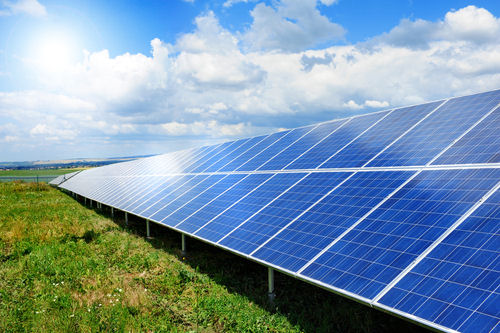Choosing between a Feed-In Tariff or Net Metering on your next solar project.
![]() Georgia
Power's New Feed-In Tariff
Georgia
Power's New Feed-In Tariff
GSI
started thinking about this debate of
net-metering vs. feed-in tariffs several years
ago. We speak to a lot of companies that have
completed a renewable project over past last
year yet a lot of them say they don't see the
anticipated energy savings. How is it that you
can complete a project like a lighting retrofit
or a solar installation yet not realize any
substantial energy savings?
We know that high efficiency lighting retrofits work! They save energy. They save a substantial amount of energy, upwards of 30% per fixture. If the companies are saving 30% shouldn't they see that in their electrical bill?
The reason they are not experiencing the savings
is not that their
fixtures aren't performing it is probably the way their electrical bills are setup. The video
on the right side of this page entitled
Feed-in Tariff
vs Net Metering covers the billing issue. Some
companies are on tiered billing which means when
they do energy saving projects they are actually
saving the KWH billed at the lower rates and not the
KWH billed at the higher rates. Watch the video.
the way their electrical bills are setup. The video
on the right side of this page entitled
Feed-in Tariff
vs Net Metering covers the billing issue. Some
companies are on tiered billing which means when
they do energy saving projects they are actually
saving the KWH billed at the lower rates and not the
KWH billed at the higher rates. Watch the video.
How can the companies get around this issue with solar projects in Georgia? The answer is simple, get your energy savings by selling all of the energy back to the grid with Georgia Power's Feed-in tariff.
Late last year Georgia Power decided to do away with their old SP-1 rate which paid customers to export the energy their solar plants produced directly to the grid. This "Solar Power" rate is known as a buy-back program or a sell-all, we commonly refer to it as a Feed-in tariff. It gets this name because all the energy is fed back to the electrical grid.
What replaced the SP-1 rate is the new Georgia Power Advance Solar Initiative. This new program is dropping the feed-in tariff rate from 17¢/KWH (old SP-1 rate) to a starting rate of 13¢/KWH.
13¢/KWH is still a big number here in Georgia where GPC has done a good job of holding down electrical costs for their customers. Why is it that when you are speaking with plant managers or the energy managers of those plant's that they would rather work within a net-meter solution vs. the feed-in tariff?
The reason is simple, plant managers want to save energy. Lighting retrofits and solar energy projects save energy. No question about it. However as mentioned above they may only be saving the "cheap" energy and not saving the "expensive" energy. If the company is on a tiered or bucket type of billing plan vs RTP they may not actually see a reduction in the energy savings.
They way to realize the savings on a company's P/L when on tiered billing is through the feed-in tariff. The company will probably create a line item in the electrical expense that shows the positive results stemming from the revenue created by the the company's solar array. Instead of realizing the savings by "slowing down the meter" and using the energy from your solar array you take the money generated by the array and apply it to that electrical expense.
Do you need an EPC to help you install your GPASI project?
Click Here to contact a solar installer
In need of an EPC?
Fill out the form to contact a solar developer


